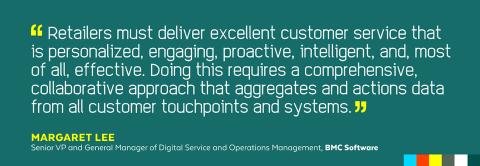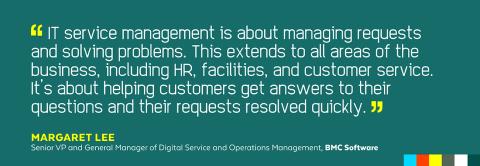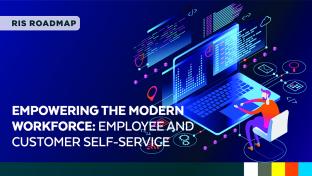Architecting the Workforce of the Future: Empowered, Autonomous, and Agile

One in three frontline retail workers say “lack of flexibility” is a top reason for leaving their job, according to McKinsey. As talent shortages and turnover remain high, retailers are investing in technologies that empower their workforce to address problems more autonomously, and give them back their much-needed time.
Throughout all this, retailers know that the core objective is to enhance human capabilities, not replace them. Automating away repetitive tasks creates knowledge-sharing ecosystems across the enterprise, and allows associates to focus on the most valuable task of all – delivering an exceptional customer experience. RIS sits down with Margaret Lee, senior VP and GM of Digital Service and Operations Management, BMC Software, to discuss how retailers can harness intelligent automation and chat technology to enable agents to work smarter, autonomously manage requests, and elevate their engagement with customers.
RIS: What does becoming an Autonomous Digital Enterprise mean for retailers, their staff, and customers?
Margaret Lee: As retailers know well, the business is changing fast. Customers expect more. They want in-store and online. And they want it all now. To win, retailers need to mature into an Autonomous Digital Enterprise that can adapt to changing conditions quickly. Part of this evolution means making it as easy as possible for employees to get pertinent information and complete the necessary tasks to do their jobs and focus on what’s important: the customer experience. Retailers must automate as much of the mundane work as possible to allow their people to focus on value, not repetitive tasks.

RIS: From the customer perspective, does this extend across all omnichannel engagements, including in-store and online?
Lee: Customers continue to raise the bar when it comes to their service expectations – they want to be able to interact how they want and when they want.Retailers must deliver excellent customer service that is personalized, engaging, proactive, intelligent, and, most of all, effective. Doing this requires a comprehensive, collaborative approach that aggregates and actions data from all customer touchpoints and systems. This means meeting the customer in their channel of choice; using their status, sentiment, and history to customize engagements; and empowering employees to quickly and accurately address issues.

RIS: BMC’s heritage is IT service and operations management. What role are you playing in retail beyond the IT angle?
Lee: IT service management is about managing requests and solving problems. This extends to all areas of the business, including HR, facilities, and customer service. It’s about helping customers get answers to their questions and their requests resolved quickly. We recently released a solution that allows customers to interact with retailers and others through their channel of choice: self-service, chat, email, phone, and social media. We bring together sales, marketing, and other teams to collaborate with customer care teams and integrate with a wide variety of systems, including CRM, telephony, social listening, billing, payment gateway, campaign management, and SMS.
To make chat more productive, we integrate with Google Translate to do real-time translation of chat conversations so customers can communicate in their native language, making it easier to get the assistance they need and resolve problems. Google is a key partner in the delivery of this service, and by leveraging Google Cloud Platform's infrastructure, services, and best practices, we have been able to build a secure, reliable, and innovative solution for our existing and new customers.
RIS: What are some of the benefits, operational efficiencies, and customer service improvements that retailers can expect to see?
Lee: These technologies can help agents ask the right questions to improve first contact resolution rates, including the ability to offer sales promotions, discounts based on customer profile, refund processes, and more. Plus, agents are assigned cases based on domain skills, case categorization, customer segment, products, and services. Operationally, adding automation and reducing the mundane work will help make employees more productive and happier.
All of this makes it easier for customers to conduct business with you and get the help they need when they need it, driving greater customer loyalty, an improved customer experience, a reduction in churn, and increased revenue and market share.




